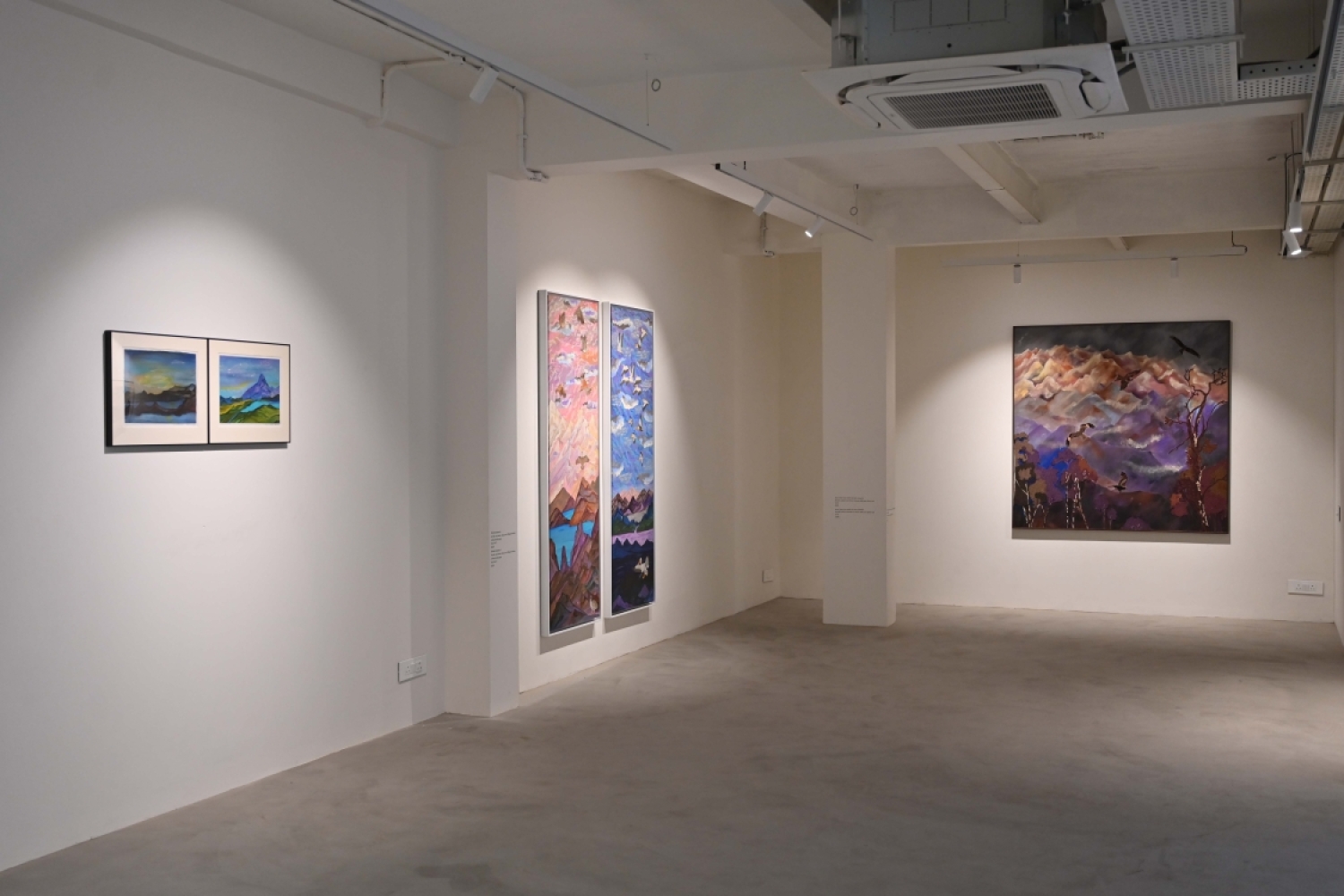

In her new solo exhibition Khula Aasman, senior artist, Seema Kohli recreates the memory of her ancestral home in her brand new studio—a place she calls home which has been designed by Khushnu Panthanki Hoof of Studio Sangath. A space that is going to be her playground with ideas bouncing off the walls. For years, she worked from a 125-square-foot apartment, where her art often spilled out onto the street gully. 'A few weeks ago, I completed a commissioned artwork for Morgan Stanley, which measured 75 feet by 15 feet and was based on the concept of Hiranyagarbha. I struggled to find space for these large cut-outs ready for painting, so I transformed the street gully in front of my home studio into a makeshift studio,' she explains.
The exhibition comprises a range of mixed media works, including a multichannel video installation, overpainted silver gelatin prints, paintings and an incredible, large-scale Phulkari textile, created in collaboration with the women’s collective Meher Baba Charitable Trust in Bassi Pathan (Punjab).
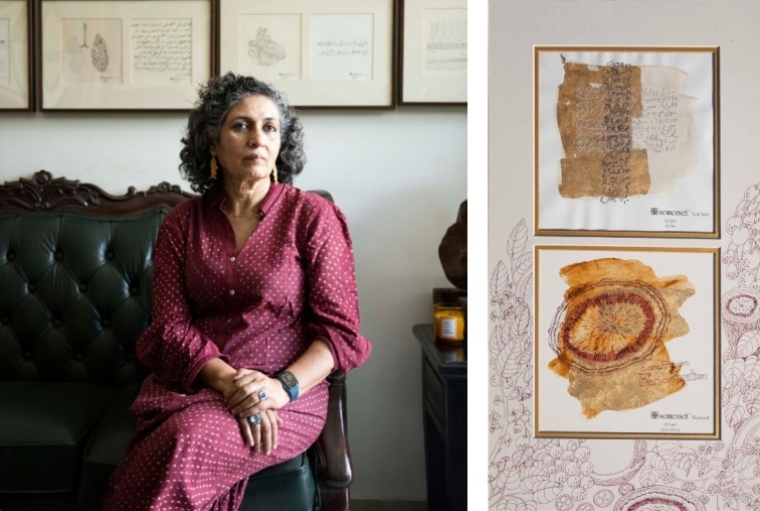
For your new exhibition, you have delved into your past by exploring the memories of your ancestral home. What inspired you to reach back so many years?
I have been developing a concept and narrative since 2017, inspired by my father's autobiography, Mitra Pyare Nu. I presented performative readings at eight universities in the US before launching my first show, curated by Advait, in 2019 at the Kolkata Creative Center. This exhibition explored themes of home, nostalgia, and memory, showcasing original photographs and ancestral materials alongside my artworks. Building on this, I've focused on my father's memories, extracting elements such as the Hindu Kush mountains, Katasaraj temples, and the flora and fauna he described. Our conversations about his childhood village revealed that this story transcends our family—it's emblematic of any cultural community. It highlights the interconnectedness of spaces, animals, and nature, emphasizing the importance of sharing these narratives.
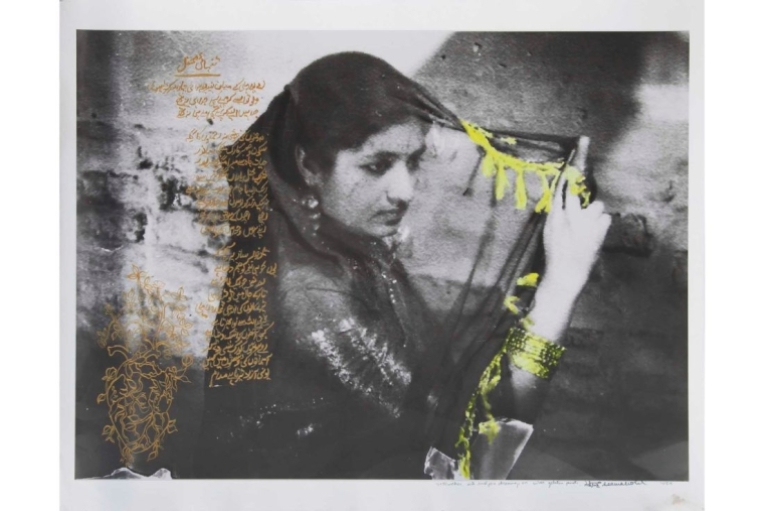
You chose to open your brand new studio with this exhibition. I wanted to understand the conversations you had with Khushnu Panthaki Hoof, the designer, regarding the studio. What was the vision or sensibility you aimed to achieve?
I first encountered Khushnu's architecture in 2019 at a gallery in Ahmedabad. I was captivated by how the light fell in her designs, reminiscent of Mr. Doshi's work. The way the curves and lines blended was stunning. At that time, I wasn't sure if I would ever have my studio since I didn't have land yet. Once we acquired the space and began construction, I knew I had to reach out to Khushnu. When I contacted her, I expressed that I wanted a personal space, not just a gallery. I envisioned a three-side open building with storage and views of the sky. The final design allows for sky views framed by glass and open balconies, making it feel like you're looking through a frame at the sky and the birds. Originally, we planned to hold our show at the Partition Museum, but it couldn't accommodate contemporary works. So, we decided to use our new space, which wasn't fully ready in September-October. Thanks to Khushnu's efforts and supervision, we made it happen, and it turned out beautifully.
Are there any specific color palettes you are considering for this studio?
Khushnu mentioned Broughton Street because of a gallery with a complete red outer wall, which I liked. I asked if we could use that idea, and she suggested using cotton steel instead of paint. I had seen cotton steel at the Gaborone Museum in Spain about 12 years ago, and I was immediately intrigued. That's how we decided on the red color. While some areas are white, the inside remains all white, but everything else is red.
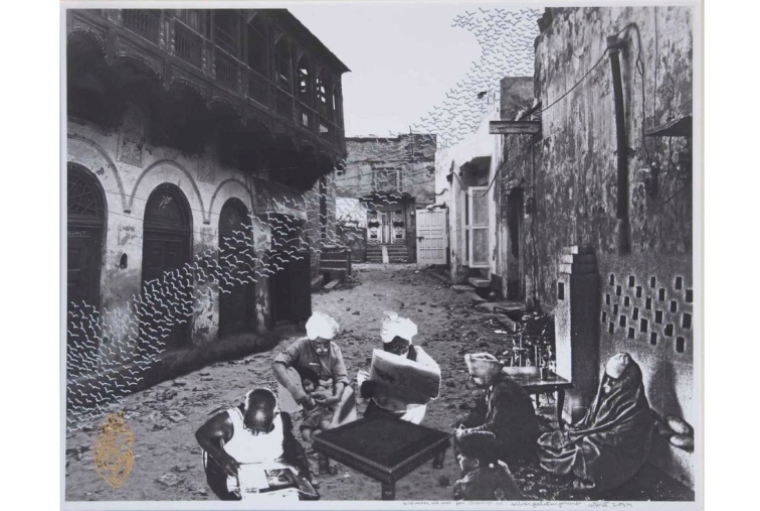
How do you think you have evolved as an artist and has your work also evolved with you?
The work is constantly evolving based on my concepts and subconscious influences. My recent pieces were influenced by the memory and loss of my father. This urgency to create and explore his writings drove me to experiment with various mediums, such as watercolors and lithographs. Advait encouraged me to pursue these explorations without fear, emphasizing that our approach could be flexible and open. As an artist, being free to experiment is crucial; clinging to a fixed style can be limiting. Despite working in film since 2010, where I've created about 15 films and annual video performances, my contributions often go unnoticed. However, two of my works have been included in museum collections, and this project marked my first full wall projections, which made a significant impact.
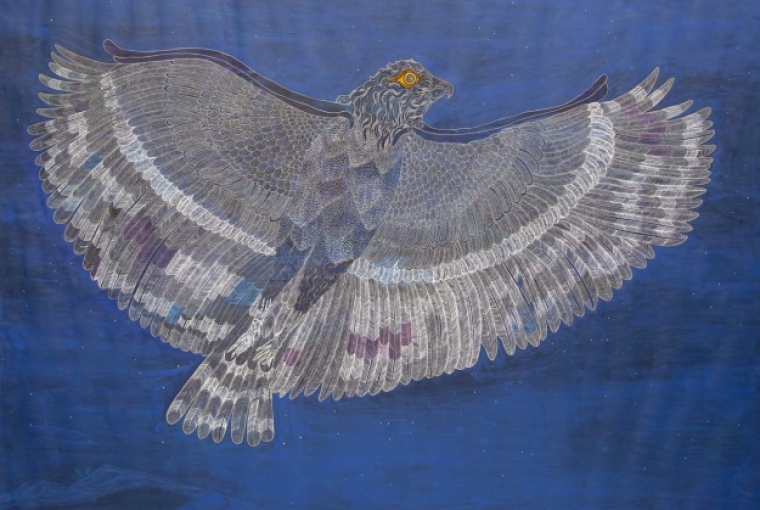
What motivated you to open this studio and create your own space?
I’ve always felt the need for a dedicated space to respect my work. Living in a small 125-square-foot apartment in Delhi, I often had to roll my large art pieces out into the street to work, which felt inadequate. My work has been a constant companion throughout my life, serving as my best friend and confidant. After 40 years in this profession, I finally have a storage space with a large basement for my artworks. This isn’t an exhibition space; it’s a place where I can keep my creations with the respect and dignity they deserve. Every artist aspires to have a studio to honor their craft, and this space fulfills that desire for me.
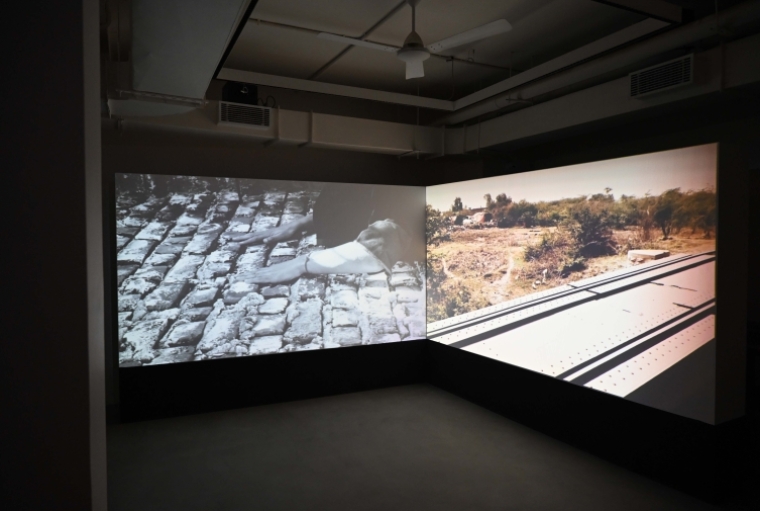
Can you tell us about the events that are you are planning to host during art fair?
I wanted to talk about memory, migration, and how these experiences shape our communities and cultures. Migration is a social phenomenon that reflects both disruption and resilience, whether it's forced, political, or driven by personal ambition. Today, I walked with Sohail Hashmi around the Kashmiri Gate area to explore how migrations have transformed food habits and behaviors, contributing to the evolving character of Delhi. Migrations are beneficial as they introduce new cultures, ideas, and culinary diversity, fostering openness and acceptance. We’re collaborating with Ambedkar University, where students are registered to participate in our discussions. Sarovar Zehdi and Tej are also on board to facilitate these conversations. Additionally, I'm excited about an evening with Sufi singer Radhika Sood Nayak, who will perform some of my father's poetry during the collaborative Okhla night event. Everything we're doing highlights our interconnectedness and shared cultural experiences.
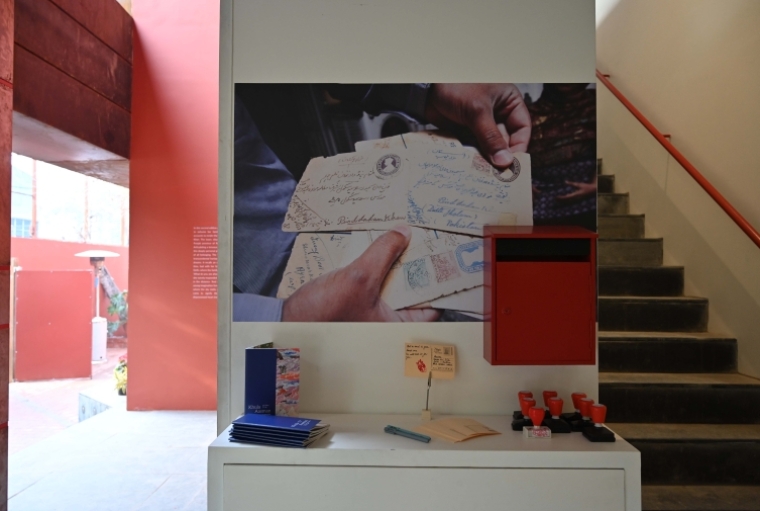
Words Hansika Lohani
Date 22.01.2025